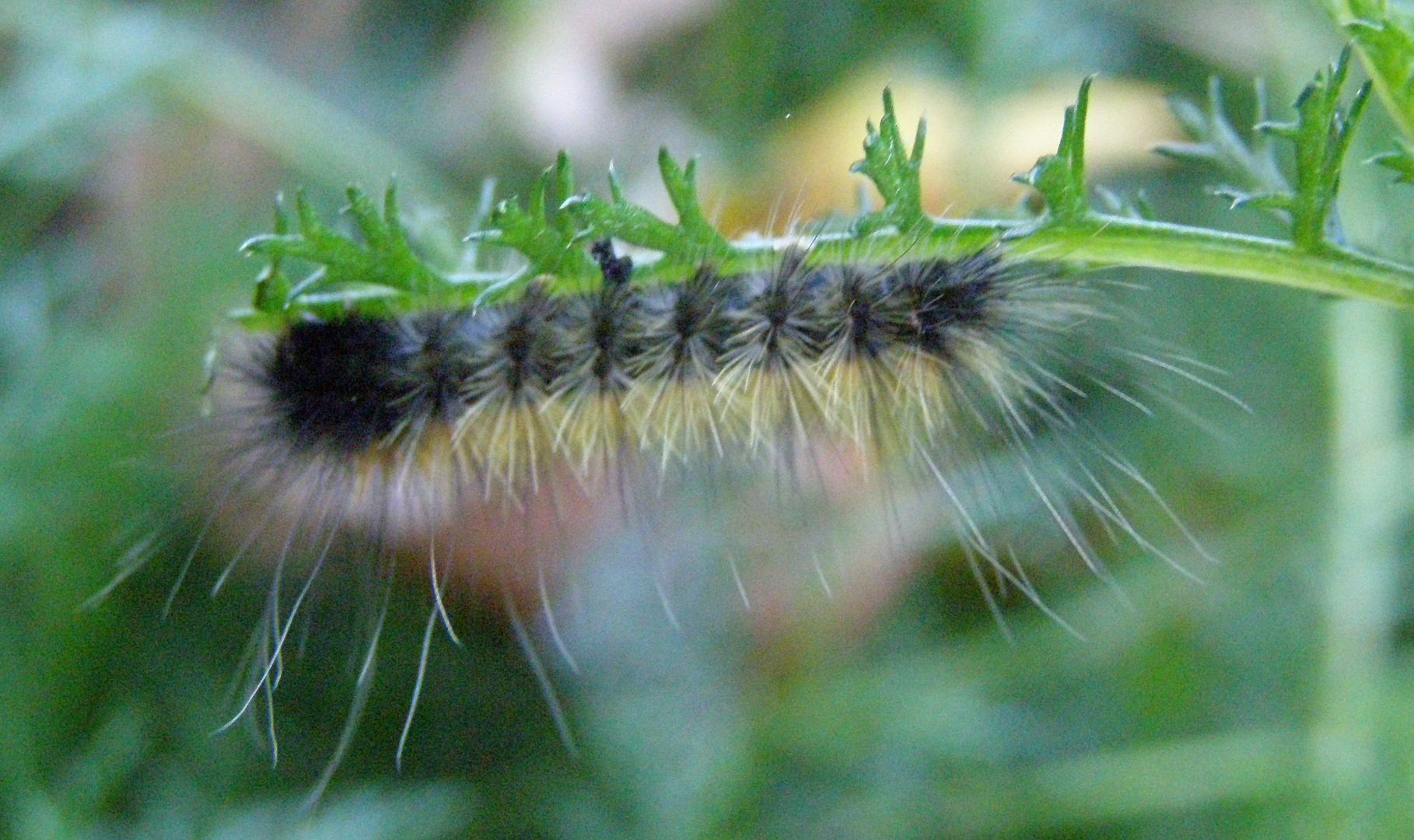
Well I'm seeing Woolly Bears so it must be fall. Pyrrharctia isabella is one of the most commonly encountered caterpillars at this time of year. Unlike many other species of Lepidoptera one doesn't have to have a butterfly garden nor the host plant to find them.
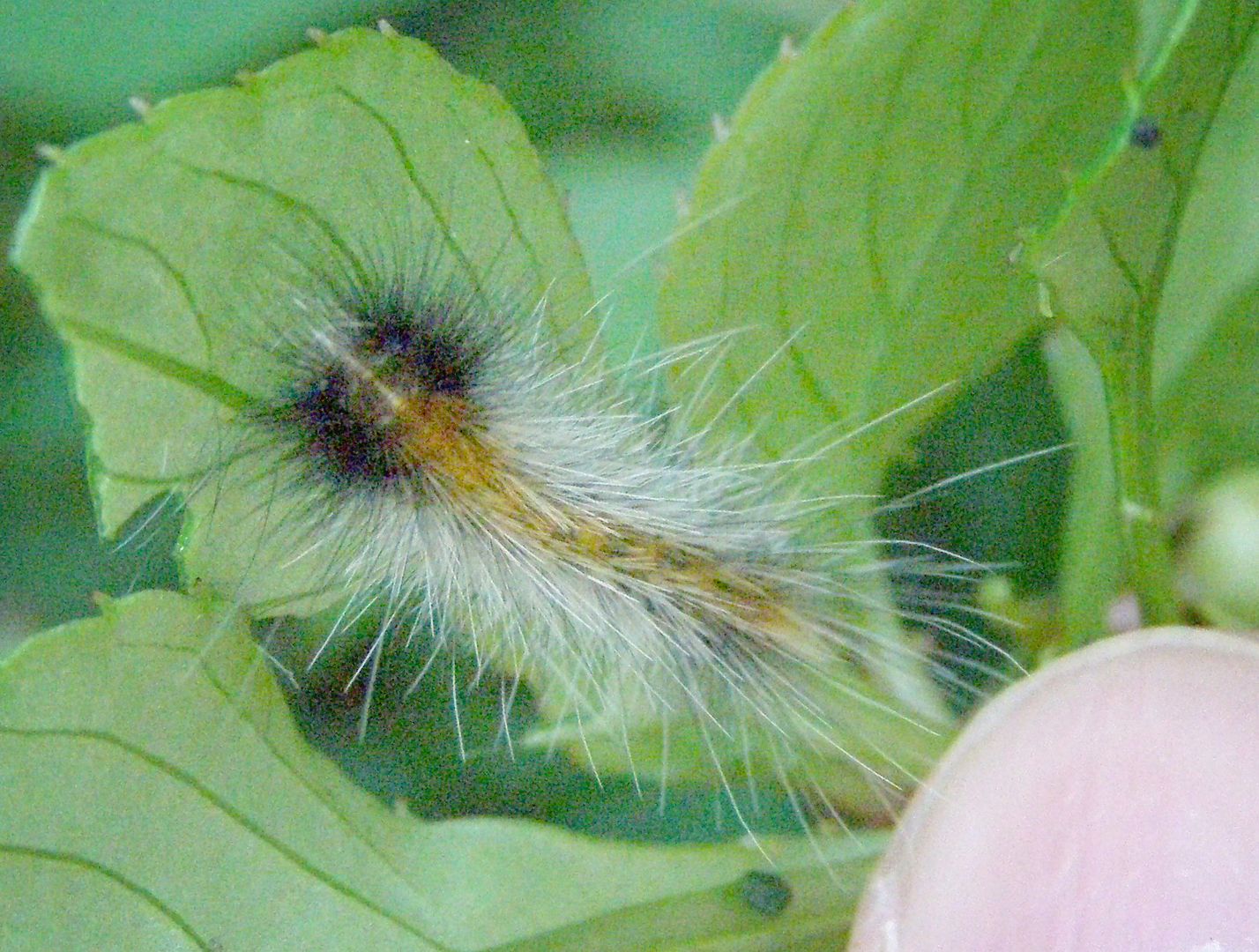
Here a young instar nibbles at the leaf of an Impatient. What makes them so common is that they can feed on almost any plant and constantly wonder feeding on a variety of plants as they go.
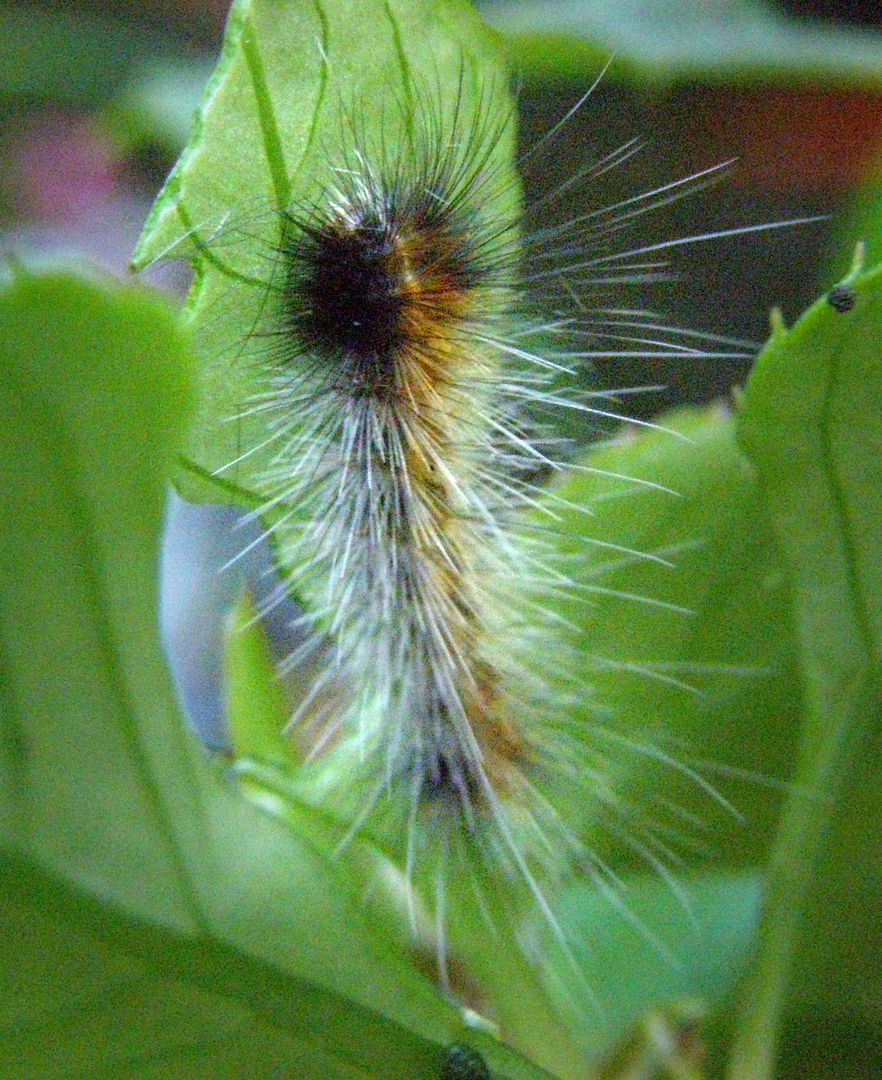
Caterpillars of Eastern North America: A Guide to Identification and Natural History (Princeton Field Guides)
In it they list a number of host plants that include "dandelion, grasses, lettuce, meadowsweet, and nettle" but I assure you those are just a drop in the bucket. BugGuide.net adds the following: asters, birches, clover, corn, elms, maples and sunflowers.
If I recall right I think they eat the leaves to apple, and cherry trees too but don't venture up very hight.
With so many "host plants" surely the moths must be attracted to one or the other and I'm very sure they are. I found a cluster of hatched eggs on my goldenrod (that I'm kicking myself for not photographing,) but these could belong to any number of insect. There is such a cluster visable though in the BugGuide.net link above.
Many have asked why do the caterpillars migrate at all, surely striping the leaves off the plant they were all hatched on would be the safest option. This is not quite the case though. Spreading out is a good tactic because birds will only discover individuals rather then clusters of food. Parasites will also have a harder time homing in on their hosts. Also the caterpillars become more or less toxic based on the certain plants that they eat.
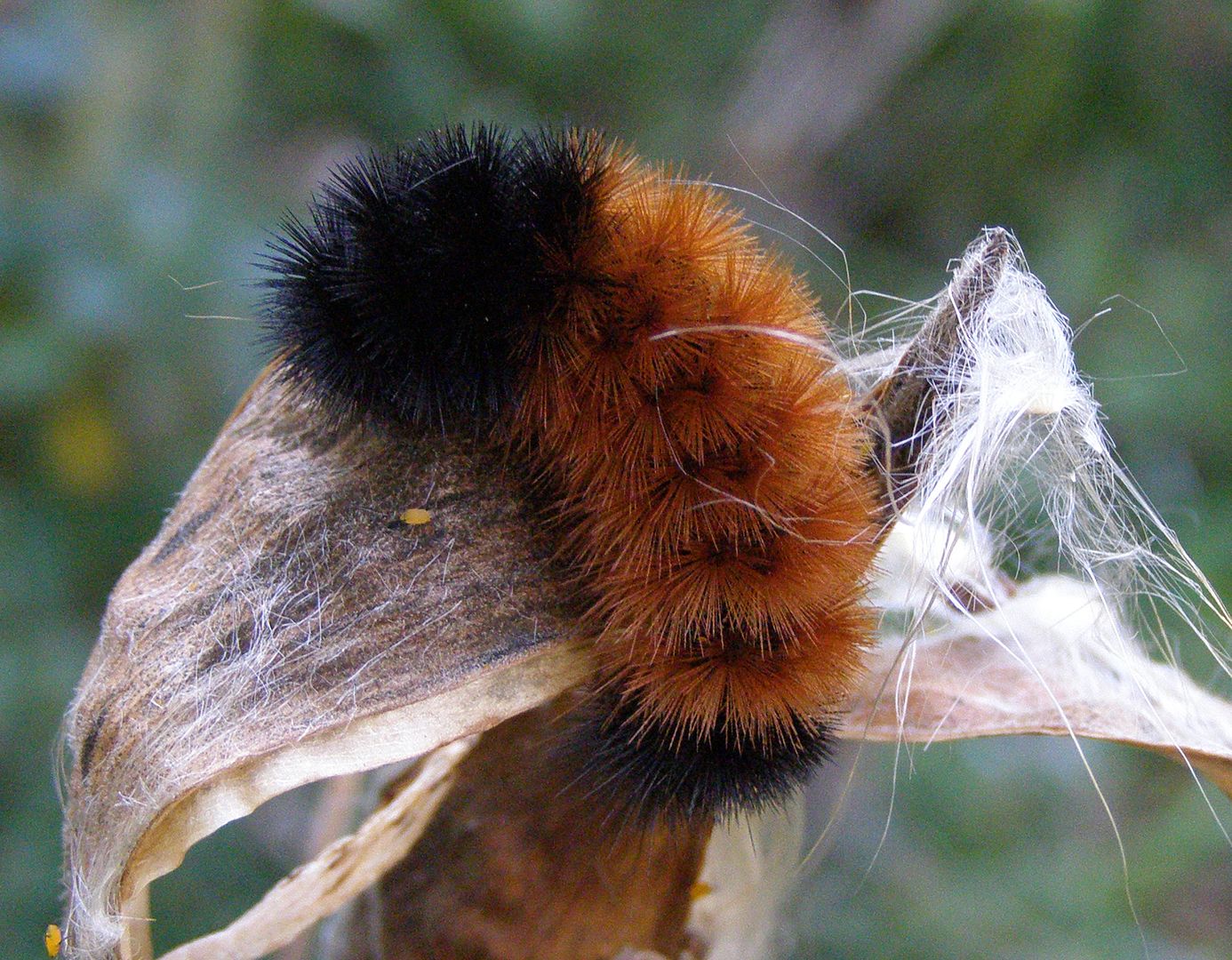
Superstitious people like to believe that the longer the band of brown indicates a mild winter. Though this usually conflicts with the logic of groundhogs, migratory butterflies, the weather man, the width and density of patches of moss on north sides of trees, the other weather man, and even other Woolly Bear caterpillars.
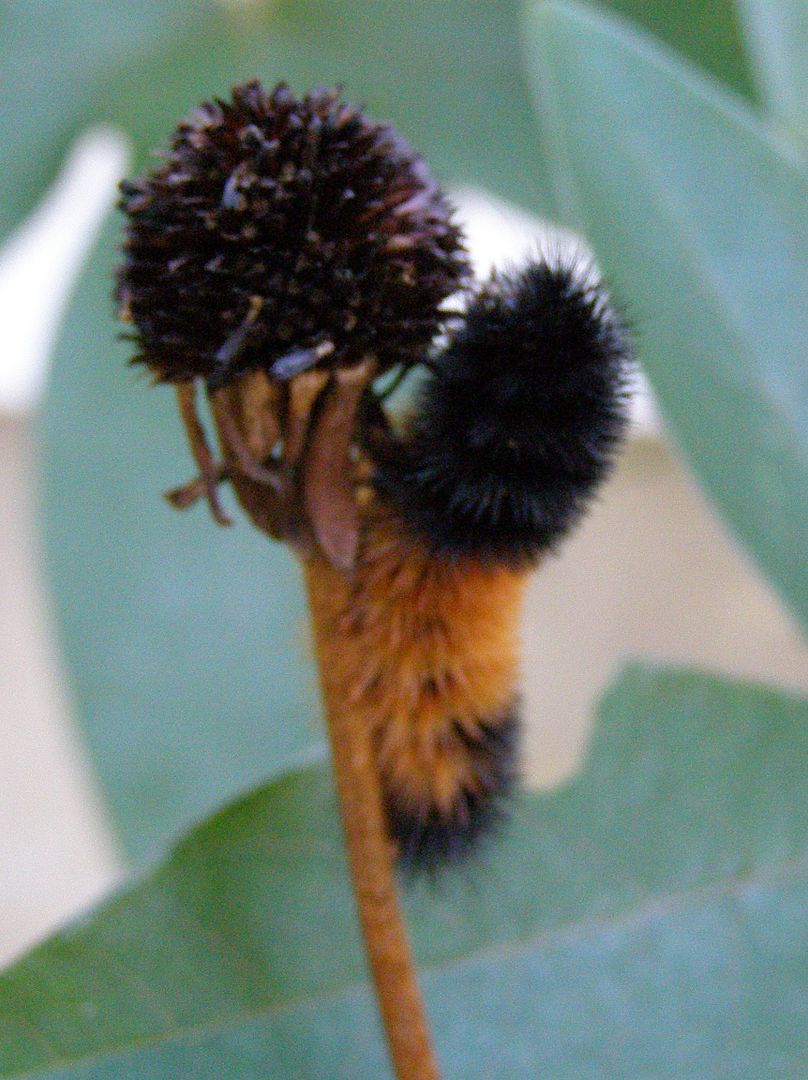
Walking just a few feet away I found another Woolly Bear that seemed to be in disagree.